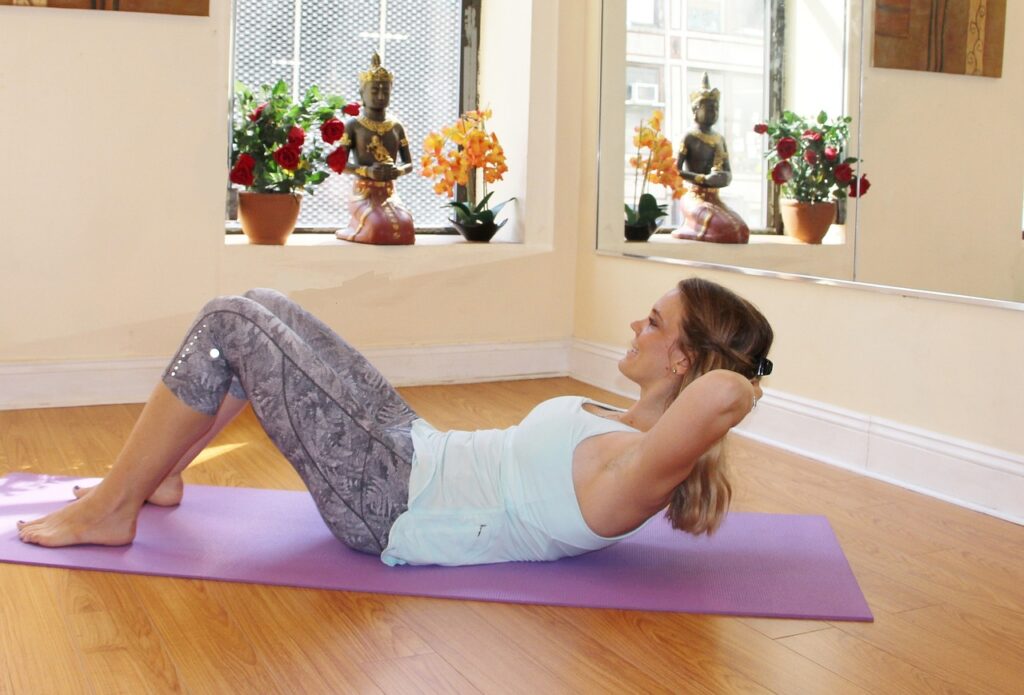
Exercises for Lower Back Pain
Introduction
Lower back pain afflicts a large portion of the adult population, often as a result of sitting and desk-bound lifestyles, improper lifting techniques, or even chronic conditions. It’s one of the most common complaints presented to healthcare professionals.
Back Pain Requires A Multifaceted Approach
Addressing this discomfort requires a multifaceted approach—one where carefully selected exercises play a pivotal role. These regimens target the muscles supporting the lower back, improving strength and flexibility to mitigate pain and enhance overall function.
Effective Exercise
An effective exercise for managing lower back pain hinges on understanding the underlying mechanics of the back. Furthermore, knowing how various exercises can relieve tension and reinforce core stability is important.
Incorporate Stretch and Strengthening
These exercise programs should incorporate stretching and strengthening exercises as well as low-impact aerobic activities and should be performed consistently and correctly to yield the best results. A balanced workout routine can alleviate back pain and serve as a preventive measure against potential discomfort.
Key Takeaways
- Exercises targeting the lower back can alleviate pain and enhance mobility.
- A balanced routine includes strengthening, stretching, and aerobic activities.
- Consistent and correct exercise execution is essential for the best outcomes.
Low (lower) back pain (LBP) occurs between the lower edge of the ribs and the buttocks. It can be acute, sub-acute, or chronic. Anyone can be affected. LBP can make it difficult to move and affect mental health and quality of life.
The four subcategories of nociceptive pain in the lower back are (1) Lumbar Discogenic Pain, (2) Sacroiliac Joint Pain, (3) Zygapophyseal Joint Pain, and (4) Myofascial Pain Syndrome.
Lower back pain can be complex and has many causes, from benign tumors to sudden severe pain. Precisely understanding the causes and symptoms is critical because this will dictate exercise and other management strategies’ role in recovery.
Identifying Causes and Symptoms
Lower back pain is often categorized as nonspecific, meaning no specific cause is identifiable. It is often attributed to muscle or ligament strain. However, it can also stem from more serious conditions, such as infection, cancer, or underlying spinal issues. Common symptoms include a persistent ache, sharp pain, or discomfort that may radiate down the legs. Patients may also experience stiffness or reduced mobility.

Key Moves For Alleviating Discomfort
The Role of Daily Exercise in Managing Back Pain
Daily Exercise is a cornerstone in the management of lower back pain. It enhances muscle strength and flexibility, which can alleviate the pressure on the spine. Strengthening the core muscles helps to support the spine, potentially reducing the instances of nonspecific back pain. Patients are advised that simple exercises, such as walking or swimming, can be beneficial and should be incorporated into their daily routine.
Exercise Fundamentals For Alleviating Discomfort
Understanding exercise fundamentals is vital for both safety and effectiveness when it comes to exercising to alleviate discomfort and lower back pain. Fundamental principles such as proper form and a well-designed exercise routine can lead to improved strength, flexibility, and overall muscle health.
Proper form is crucial when performing exercises, particularly for the lower back and spine. Ensuring that the targeted muscles, such as the glutes, are effectively engaged, reducing the risk of injury.
Proper Form Involves Maintaining Alignment
Proper form involves maintaining alignment and balance throughout each movement, which can maximize the benefits of strength-building exercises. It’s advised that individuals learn exercises under the guidance of a healthcare professional.
Movements Support Specific Needs
Proper form ensures that the movements support their needs and capabilities, which vary with age and health.
Designing a Safe Exercise Routine for Managing Back Pain
A safe exercise routine considers the individual’s current level of fitness, flexibility, and any pre-existing health concerns. It includes a variety of exercises tailored to promote lower back health and should be based on a sensible repetition range that avoids overexertion. Here’s a brief framework:
- Start with a warm-up to prepare the muscles for exercise.
- Incorporate core-strengthening movements to support the lower back.
- Include low-impact flexibility exercises for range of movement improvement.
- Progress gradually, increasing repetition and intensity in a controlled manner.
- Rest sufficiently between sets to allow for muscle recovery.
A healthcare professional should be consulted when designing an exercise routine to ensure it aligns with the individual’s specific health profile and fitness goals.
Strengthening Exercises to Reduce Lower Back Pain
Fortifying the muscles that support the spine—the core, glute, and hip muscles—is critical to effectively reducing lower back pain. Strengthening these areas not only helps alleviate pain but also prevents future discomfort.
Core Strengthening for Spinal Support to Alleviate Discomfort
The core muscles—comprising the abdominals, back muscles, and the muscles around the pelvis—are essential for spinal support and stability. Strong core muscles prevent unnecessary strain on the lower back as they bear a significant part of the load during daily activities.
- Glute Bridge: This exercise enhances the strength of the gluteus maximus, one of the key muscles that support the lower back.
- Lie on your back with your knees bent and feet flat on the floor.
- Push through the heels to lift the hips, forming a straight line from the knees to the shoulders.
- Hold for a count of three, then slowly lower the hips back to the floor.
- Plank: A fundamental exercise that strengthens the entire core region.
- Lie face down, then prop up on forearms with elbows directly under shoulders and legs extended.
- Lift the body to form a straight line from head to heels.
- Hold the position, keeping the abdominal muscles tight, for as long as possible without compromising form.

Targeted Glute and Hip Workouts
Stabilizing the hip joints and strengthening the surrounding muscles, like the gluteus medius, help maintain proper alignment and reduce strain on the lower back.
- Hip Abduction: Strengthens the gluteus medius, which is vital for hip stability.
- Lie on one side with legs stacked and body in a straight line.
- Raise the top leg while keeping it straight, then slowly lower it back down.
- Clamshell: Focuses on the gluteus medius and helps in hip stabilization.
- Lie on your side with hips and knees bent at a 45-degree angle.
- Keeping feet together, open the top knee like a clamshell, then close it.
- Ensure the hips stay still and do not roll backward during the movement.
Incorporating these exercises into your routine can significantly boost core strength and glute power, helping to provide the robust support your lower back needs.
Stretching and Flexibility
Stretching exercises are vital for maintaining spine health and improving lower back flexibility. They can enhance the range of motion and relax tightened muscles, particularly in the lumbar region and hip flexors.
Dynamic Stretches for Mobility
Dynamic stretches for mobility focus on movement-based exercises, which warm the muscles and prepare the body for physical activity. A typical dynamic stretch for the lower back is a lumbar extension, where one starts standing, places hands on the lower back, and gently arches backward.
Yoga ( Cat-Cow Pose)
Another exercise is the cat-cow stretch ( Yoga Cat-Cow Pose ), which involves lying on one’s hands and knees and alternately arching and rounding the spine. Begin on your hands and knees. Ensure that your wrists are directly underneath your shoulders and your knees are underneath your hips. Many people tend to place their knees a little too far back.
Stacking everything nice and square ensures you have a solid foundation from which to move. Spread your fingers and press down through your fingertips. Externally rotate your upper arms so that your elbow creases are facing forward. Look at the floor before your hands to keep your neck neutral.
In contrast, these seven static stretches involve holding a position for some time to elongate and loosen the muscles. Also, consider more static stretches for lower back pain ( mild sciatica ), such as the knee-to-chest stretch, which can effectively relieve tension in the lumbar area by lying flat and gently pulling one knee at a time toward the chest.
Hip Flexor Stretches
Hip flexor stretches are also crucial; one can execute this by stepping into a lunge and shifting the weight forward to stretch the hip of the back leg. These lower back flexibility exercises can contribute to overall spine health and well-being.
Putting It All Together
Incorporating back exercises into one’s daily routine is crucial for managing lower back pain and fostering a healthy lifestyle. Consistency is key for these exercises to be effective.

Integrating Exercises into Your Daily Routine
For individuals experiencing lower back pain, the American Academy of Orthopaedic Surgeons recommends establishing a set of exercises designed to strengthen and support the spine. One should incorporate these stretches and strengthening exercises seamlessly into their daily routine, ensuring no additional strain is placed on the back. A daily checklist could look like the following:
- Morning: Begin with gentle stretches to warm up the spine. (Refer to this morning routine)
- Midday: Include short breaks to perform seated exercises that alleviate pressure and maintain flexibility.
- Evening: End the day with a series of strengthening exercises, such as the bridge, to reinforce core and back muscles. (See evening stretches)
Sticking to a schedule not only helps mitigate discomfort but also prevents the transition of acute pain into chronic back pain.
When to Consult Health Professionals
If lower back pain persists or if one’s daily activities are significantly hindered, it is prudent to seek advice from health professionals. Physical therapy, prescribed by a physician, can be pivotal for patients with persistent symptoms. These professionals can provide personalized exercise programs that are tailored to support your spine and overall back health.
Moreover, they will instruct on proper exercise techniques to prevent further injury. It is essential to heed their guidance to ensure the safety and effectiveness of one’s exercise regimen. If you experience increased pain or discomfort during any exercise, one should discontinue immediately and consult with a healthcare provider.
Conclusion
Exercises for lower back pain can vary greatly in effectiveness and suitability. Knowing which activities are beneficial and which to avoid is crucial for ensuring a safe and effective approach to managing discomfort.
Frequently Asked Questions
1. What are some effective core strengthening exercises to alleviate lower back discomfort?
Answer: Core strengthening is fundamental for stabilizing the lower back and can reduce pain. Exercises like planks, bird dogs, and pelvic tilts target the deep core muscles supporting the spine. The Mayo Clinic provides valuable information on specific routines.
2. Can walking regularly improve lower back pain, and if so, how?
Answer: Regular walking can improve lower back pain by increasing blood flow to the spinal area and reducing stiffness. This low-impact aerobic exercise is recommended to help maintain a healthy weight, which benefits spinal health.
3. What movements should be avoided to prevent exacerbating lower back pain?
Answer: Individuals with lower back pain should avoid toe touches, sit-ups, and leg lifts, which can increase spinal pressure and pain. Twisting movements when lifting heavy objects can also lead to further injury.
4. Is maintaining physical activity or resting recommended for managing lower back pain?
Answer: Maintaining moderate physical activity is generally advised for managing lower back pain. While rest is important immediately after an injury, prolonged inactivity can lead to muscle weakness and prolonged pain.
5. What are the most beneficial exercises for older people to mitigate lower back pain?
Answer: Older people should focus on low-impact exercises like water aerobics, yoga, and stretching. Gentle activities can help reduce pain while minimizing the risk of injury. The Cleveland Clinic offers insights on exercises suitable for older adults.
6. Could you suggest any home-based exercises that effectively treat lower back pain?
Answer: Home-based exercises like knee-to-chest stretches, lower back rotational stretches, and bridging can be effective. These exercises, found on websites such as WebMD, often require no special equipment and can be performed on a yoga mat or carpeted floor.
Share via:

